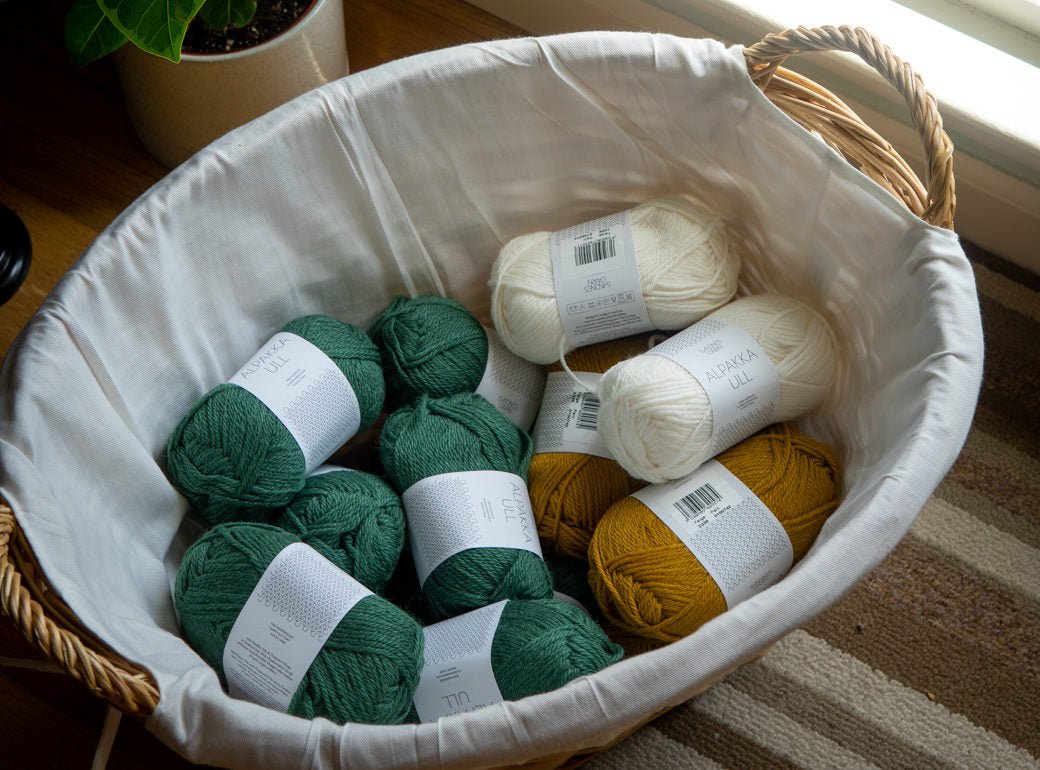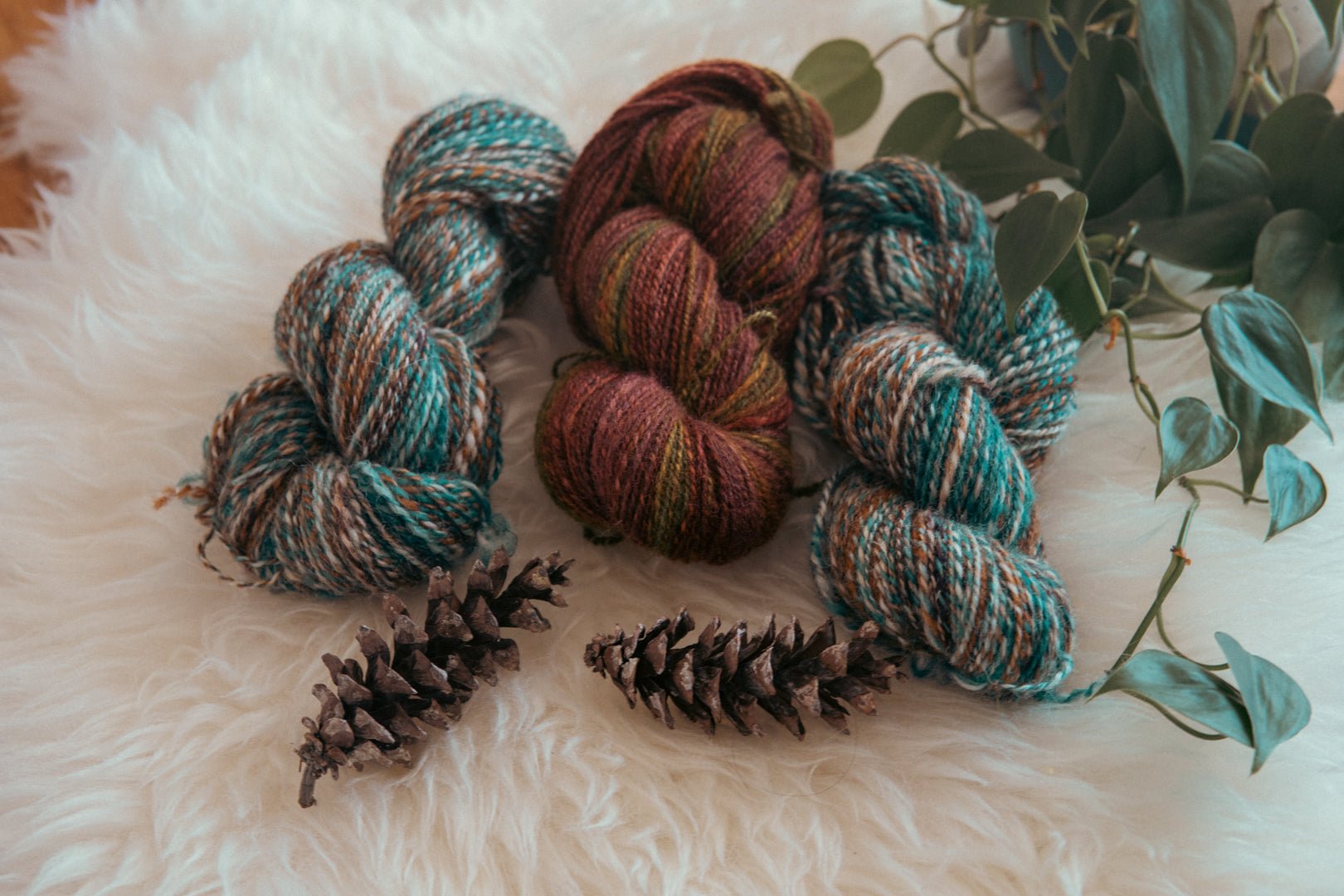
Don't be a mean yarn snob, OK?
All right... I, for one, have been guilty of being a yarn snob in the past. So sit down with a cuppa with me and let's tackle this one together.
Look: I like rare fiber, small batch, rustic, straight from the sheep, botanically dyed from locally foraged materials, handspun yarn that smells like a goddess has breathed on it as much as the next person. (See my present infatuation with Nutiden, for example.) And I’m all about shopping for yarn that aligns to your personal values and putting my money where my ethical values are. In fact, in January, I’ll be starting a blog series about just that topic.
But before we get into that, I want you all to know that I in no way endorse or condone shaming other people because they use yarn that you don’t align with (unless the yarn producer is a white supremacist or homophobic or something).
What I mean by this is the following: there’s a million and one criterias available to us (which we’ll cover in the blog series) to assess the relative ethics of each yarn. From fiber to maker to the politics of domestic fiber production… there’s a thousand ways we can judge each other for the materials that we choose for our projects.
Most often I see this in the form of acrylic shaming or even superwash shaming. It usually goes like this: “Oh that’s great, but I would’ve made it in wool.” Or “Honestly, you should never knit a sweater using superwash yarn because it’ll grow and it’s bad for the environment. It might as well be plastic.”
This kind of thing is rampant in Facebook groups, on Instagram… there’s also this insidious and subtle way that we as a knitting community make people feel like they are less skilled or accomplished makers because they use less-than-ideal (according to the yarn snob) materials.
This kind of thinking is wrapped up in classist and ableist thinking. There are a ton of reasons why someone might use acrylic, superwash, or whatever yarn you disapprove of, such as...
Cost
Many people cannot afford luxury yarn, and even all wool yarn is much more expensive to produce than your average big box acrylic yarn.
Medical Reasons
Some folks cannot use natural fiber because of medical reasons. Hyperallergenic product is the only thing they can use. Yes, even cotton/linen can be a challenge for some people, due to sensory issues.
Additionally, if you are knitting to donate to a hospital or to some kind of public service project (such as for unhoused people or refugees), more likely than not, the project needs to be fully washable and dryable, which means acrylic! This was definitely the case for hats donated to my child’s NICU when she was born.
Children
So many of us have kids, and they are messy! This means we often use acrylic or superwash yarn which results in a finished product that does not get destroyed easily in the wash. This means we will use it for much, much longer and creates less waste.
Spoons
Some of us who are living with mental illness do not have the energy or “spoons” to research yarn and we often will just knit with whatever is available to us. This might mean something that I can touch in person at the big box store, that doesn’t bother me with sensory issues, rather than prioritizing natural fiber, ethically raised, or whatever other criteria that others might look for.
In Summary
I didn’t think that it was necessary for me to write this post, but still I wanted to to make sure that we are clear about what my yarn series will be about. This shop in alignment with your values series is not intended to shame anyone or to be used as a way for you, my readers, to shame others. I want you all to see it as more a framework to find ways that you can be more mindful with your purchases, within your ability, if you want and are able to.
However, please know that not every fiber needs to be everything. I might buy yarn in one instance to support a BIPOC maker, but buy from another maker who advertises mulesing-free, raised-in-the-US wool. Would it be great if those overlap? Yes. However, not all yarns have to be all things for all people. No yarn is perfect. Sometimes, a thing can be what it is without having to cover every single base ever.
OK, so, what can you do to make sure you aren’t shaming others? Well, to start, please proof read what you write and make sure you're not subtly insinuating that natural fiber or non-superwash fiber is morally superior, and that you aren’t subtly shaming everyone else. And if you see projects using fibers or yarns you don’t agree with, maybe stop for a second and consider something else to enjoy about that post rather than jumping first to judging them in your own mind about it.
See you in my next post for the first in my series on how to evaluate yarn to align with your values! Meanwhile, let’s leave everyone else alone to enjoy this craft and hobby without shame, mmkay?
If you found this post helpful, you can support me in this work by joining my monthly subscription or buy me a coffee one time at my Ko-fi page:
Yarn depicted in photo was kindly provided by MotherKnitter.com for a design.




Leave a comment
This site is protected by hCaptcha and the hCaptcha Privacy Policy and Terms of Service apply.